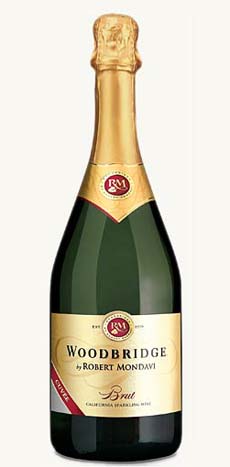TIP OF THE DAY: Save On Champagne With A Different Sparkling Wine
|
|
Holiday celebrations often mean a bottle of bubbly, including Champagne, which is made only in the Champagne region of northeast France. Every other wine that bubbles is called “sparkling wine.”
Champagne has an international fan base for its complex, toasty, yeasty wines. Champagnes have distinctive flavors, unique due to the layers of chalk underneath the region’s soil.* Since there’s a limited amount that can be produced each year on 75,000 acres, the price is accordingly high. The least expensive bottle is around $25.00. Unless your crowd is full of wine connoisseurs, you can have just as pleasant an experience with other sparkling wines for a third to half of the price of the least expensive bottle of Champagne. Other sparklers at $8.00 to $12.00 a bottle are very satisfying glasses of wine. When mixed into a cocktail, only experts can tell the difference. The complex flavors of pricey Champagne are up covered by mixers, so why overspend? (Our favorite Champagne/sparkling wine cocktail is a Kir Royale, combining the wine with creme de cassis, blackcurrant liqueur. You can use raspberry, peach or other mixers. Learn more.) Here are sparkling wine varieties to look for that are $8.00 to $15.00/bottle (prices will vary by retailer): |
|
|
A HISTORICAL NOTE ABOUT CHAMPAGNE The region of northern France now called Champagne was settled by the Gauls around 500 B.C.E. When the Roman legions conquered the area in 56 B.C.E., they bestowed upon the land the name Campania (Champagne) because of the similarity between the rolling hills of that area with the Roman (now Italian) province of Campania (the word campania itself means “open country”). In the Middle Ages Champagne was a duchy, then a country. In 1284, Champagne was brought under French rule when Jeanne, Queen of Navarre and Countess of Champagne, Brie and Bigorre married the future King Philippe IV (she was 11 years old!). When Philippe’s father died the following year, Jeanne became Queen of France at age 12. *The best grapes in Champagne are grown where a Tertiary period chalk plain overlaps a vast Cretaceous chalk plain that lies underneath the soil layer. It’s the same huge basin that created the White Cliffs of Dover in England. The chalk provides good drainage and reflects the heat from the sun. |
||



